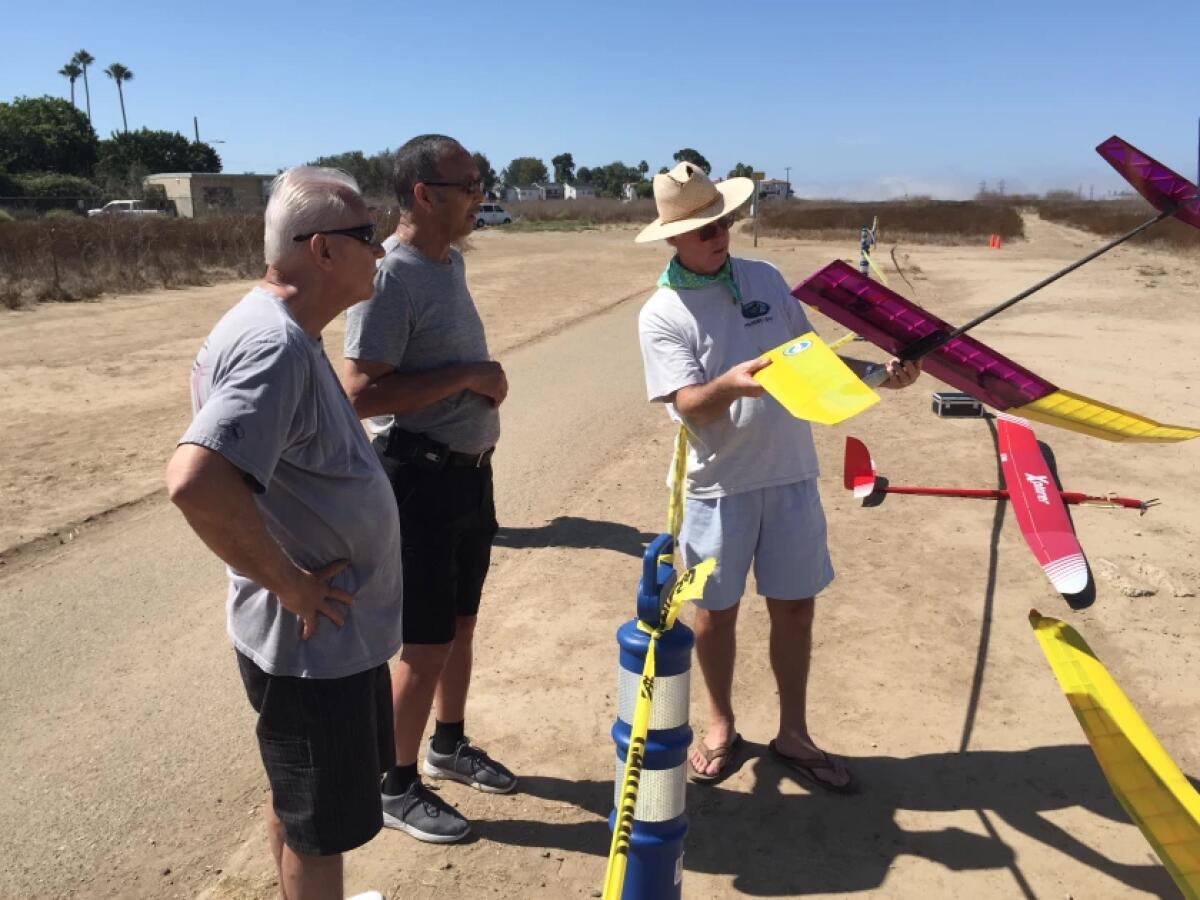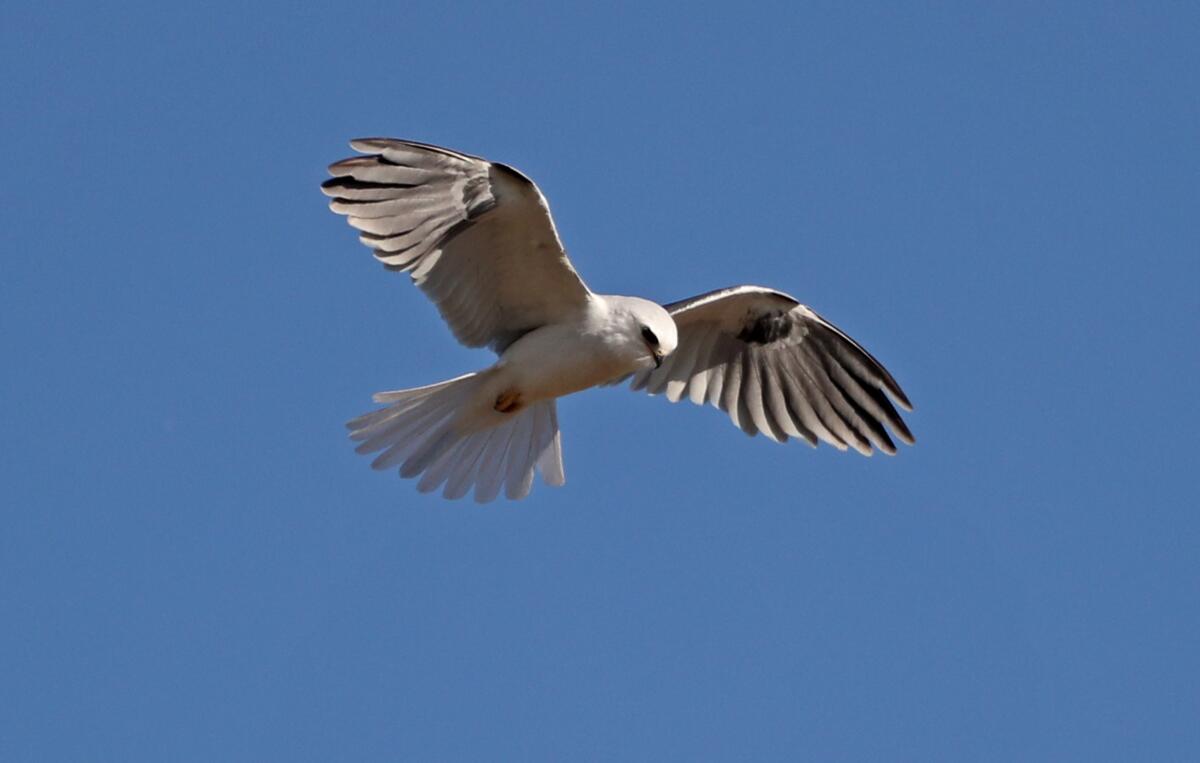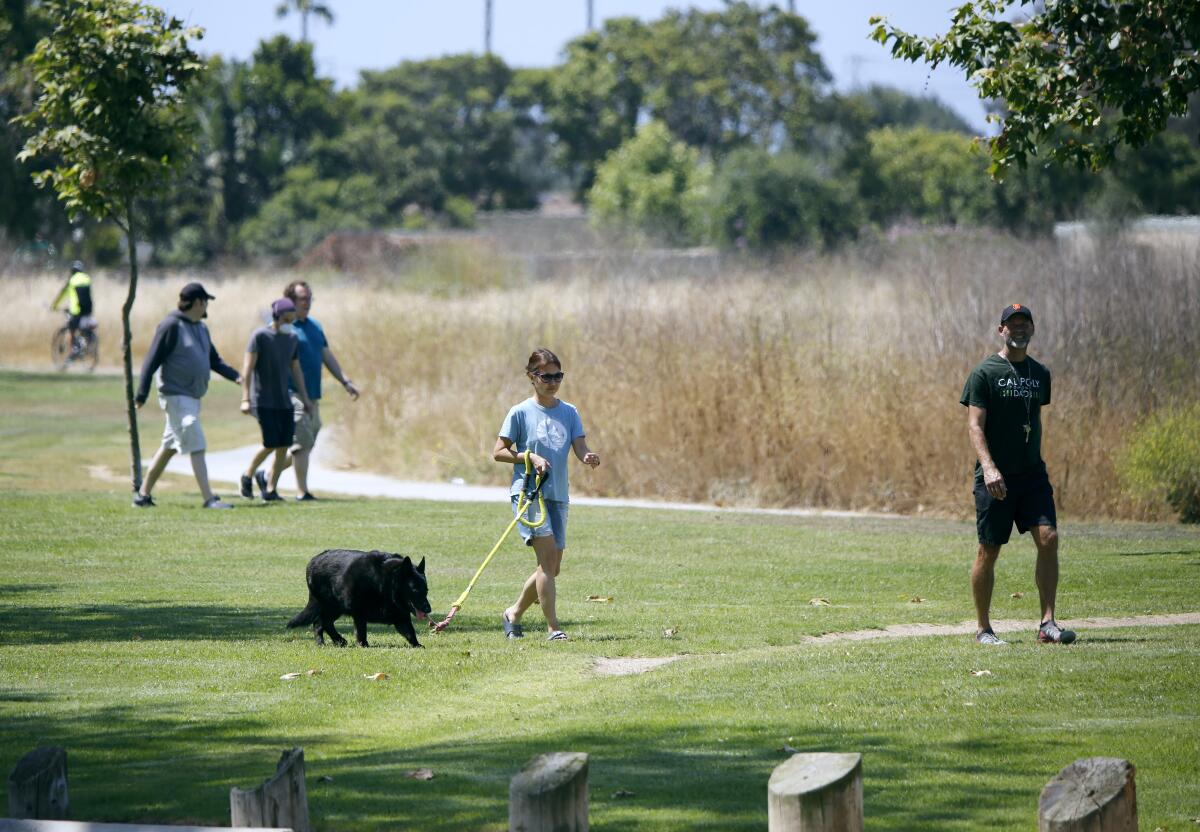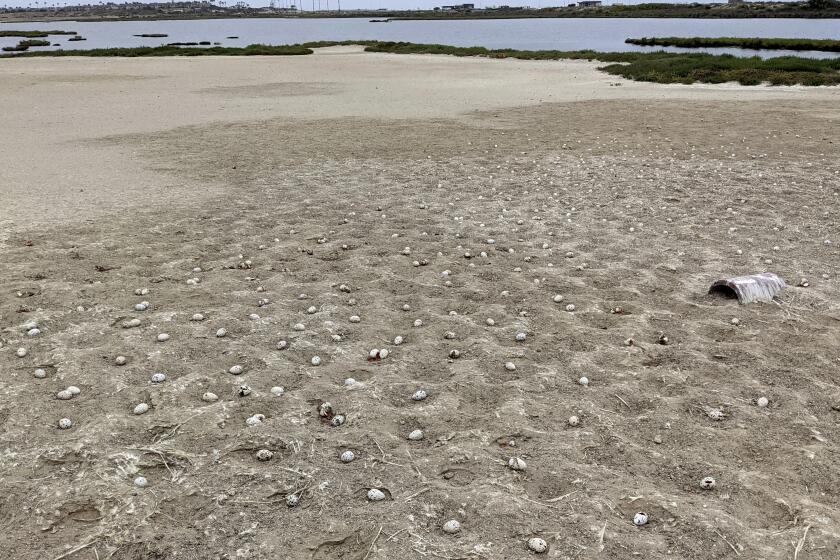Flying model aircraft at Costa Mesa’s Fairview Park spared by council from crash and burn

- Share via
Flying model aircraft in Costa Mesa’s Fairview Park — on the chopping block due to concerns about wildlife disruption — may resume in the future, albeit in a limited capacity and only until a new home for the hobby can be found.
That was the opinion Tuesday of a divided City Council, whose members decided on a 5-2 vote not to permanently close a flying field on the park’s west end where members of the Harbor Soaring Society club have flown their aircraft for some 60 years.
Instead, panelists narrowly favored allowing nonmechanical gliders to continue flying while city officials updated a master plan for the 200-acre park and scouted other locations in town where remote-control craft might be flown with fewer impacts.

Mayor Pro Tem Andrea Marr made the suggestions in a substitute motion, after the council seemed poised to consider an outright closure of the field to allow for continued restoration of rare coastal vernal pool complex nearby.
The pools are home to the endangered San Diego and Riverside fairy shrimp, a food source for untold numbers of equally rare bird species that migrate, winter and breed in Fairview Park.
City officials have recently tried to strike a balance between maintaining recreational uses at the park and preserving its ecological resources. When hobby aircraft were grounded during Fairview’s pandemic closure, environmentalists saw many species returned to the area.
“I want so badly to find a way to continue supporting the Harbor Soaring Society,” Marr said Tuesday. “I’m also confronted with the environmental piece.
“The endangered birds aren’t here to speak during public comment,” she continued. “The impacted parties, in many ways, aren’t here to provide us with their input, and there is a legitimate environmental concern.”

Marr suggested the defunct Fairview Developmental Center, a 109-acre site owned by the state that city officials are eyeing for future housing development and open space, might be a better place to fly model planes.
The motion calls on city staff to include in an upcoming revise of the Fairview Park master plan a broad analysis of the use of all model and remote-controlled aircraft. In the meantime, it permits the use of gliders on the field until the document is completed, which could take until 2023.
Councilman Jeff Harlan seconded Marr’s motion, saying the master plan process was a more appropriate place to decide the future of model airplane flying at Fairview Park than the council dais.
“I’d like to see some compromise here — I think this is the best we can get at the moment,” he added.
Tuesday’s decision is not the first time the fate of the Harbor Soaring Society has been scrutinized.
A Fairview Park Steering Committee considered the matter for more than a year before recommending in April the flying field be closed or relocated to the park’s east side, where the O.C. Model Engineers offer free public rides.
Some 3,000 elegant terns fled the Bolsa Chica Ecological Reserve after the May 12 crash, in the largest egg abandonment scientists who work there can recall.
The city’s Parks, Arts and Community Services Commission reviewed the committee’s decision in May but recommended in a 4-1 vote the Soaring Society be allowed to continue activities on the west side with modifications in place.
Council members were asked to provide direction on whether to close the field, allow it to reopen with modifications or move it to the east side. Fairview Park Administrator Cynthia D’Agosta said any option besides closure would take several years and potentially thwart restoration efforts.
“If we are to restore [the habitat], and our goal is to do that, the Fly Field poses some challenges,” she said. “There will need to be a lot of modification that needs to be done to restore it to its full capacity.”
Not all council members agreed with Marr’s compromise.
“The endangered birds aren’t here to speak during public comment...and there is a legitimate environmental concern.”
— Costa Mesa Mayor Pro Tem Andrea Marr
Mayor John Stephens said he’d support finding another location for the activity or, barring that, prohibiting it altogether. Allowing only gliders on the flying field, he said, would be a tricky proposition.
“You put gliders out there, then the remote-controlled plans are going to be out there. Then, before you know it, the drones are going to be out there,” he said.
Reynolds opposed allowing gliders, because rewriting city ordinance language, changing park signage, educating the public as to the change and monitoring use would take too much effort.
“This discussion has taken so much of staff’s time,” she said. “My preference would be to keep flying closed while we move forward on the master plan — we need to invest real time on that and on restoration.”
All the latest on Orange County from Orange County.
Get our free TimesOC newsletter.
You may occasionally receive promotional content from the Daily Pilot.





